
Giulio Romano, ‘Fall of the Giants, fresco in the Sala dei Giganti, Palazzo del Te’, 15301532
by GIULIO ROMANO and assistants. The Sala dei Giganti is located in the southern corner of the Palazzo del Tè. The walls and the ceiling of the room are painted with a single continuous scene of giant figures. It is an apocalyptic catastrophe into whose centre the viewer enters. The room's decoration represents Jupiter punishing the giants for.

Sala dei Giganti di Giulio Romano analisi
Title: Chamber of the giants. Creator: Giulio Romano. Creator Lifespan: 1499/1546. Creator Death Place: Mantova, Italy. Creator Birth Place: Rome, Italy. Date: 1532. Type: Part of the Palace. A marvellous art work that still today fascinates visitors: the Hall of the Giants, a room made to look like a cave, is decorated with representations of m.

Stanza Dei Giganti Palazzo Te
by GIULIO ROMANO and assistants The Sala dei Giganti is located in the southern corner of the Palazzo del Tè. The walls and the ceiling of the room are painted with a single continuous scene of giant figures. It is an apocalyptic catastrophe into whose centre the viewer enters.

Camera dei Giganti by Giulio Romano, Palazzo del Tè, Mantua
Written by: Meryam Joobeur. Produced by: Maria Gracia Turgeon, Habib Attia. Mohamed is deeply shaken when his oldest son Malik returns home after a long journey with a mysterious new wife. 'The Fall of the Gigants' was created in 1532 by Giulio Romano in Mannerism (Late Renaissance) style. Find more prominent pieces of mythological painting.
Museum Art Reproductions View of the Sala dei Giganti (vault and south wall), 1526 by Giulio
Sala dei Giganti (Chamber of the Giants) Apr 15, 2021 737. THE PALAZZO DEL TÈ WAS built in the 16th century as a leisure palace for Federico II Gonzaga, Marquess of Mantua. Italian artist and architect Giulio Romano, who had been a student of Raphael, designed the building. Today it is widely considered to be Romano's masterpiece.

Sala dei Giganti di Giulio Romano analisi
Esme Garlake asks whether an ecocritical re-reading of Giulio Romano's fresco can help us to reflect on human reactions to disasters and conflict, as well as the more unexpected ways in which the masterpiece connects us to previous generations.
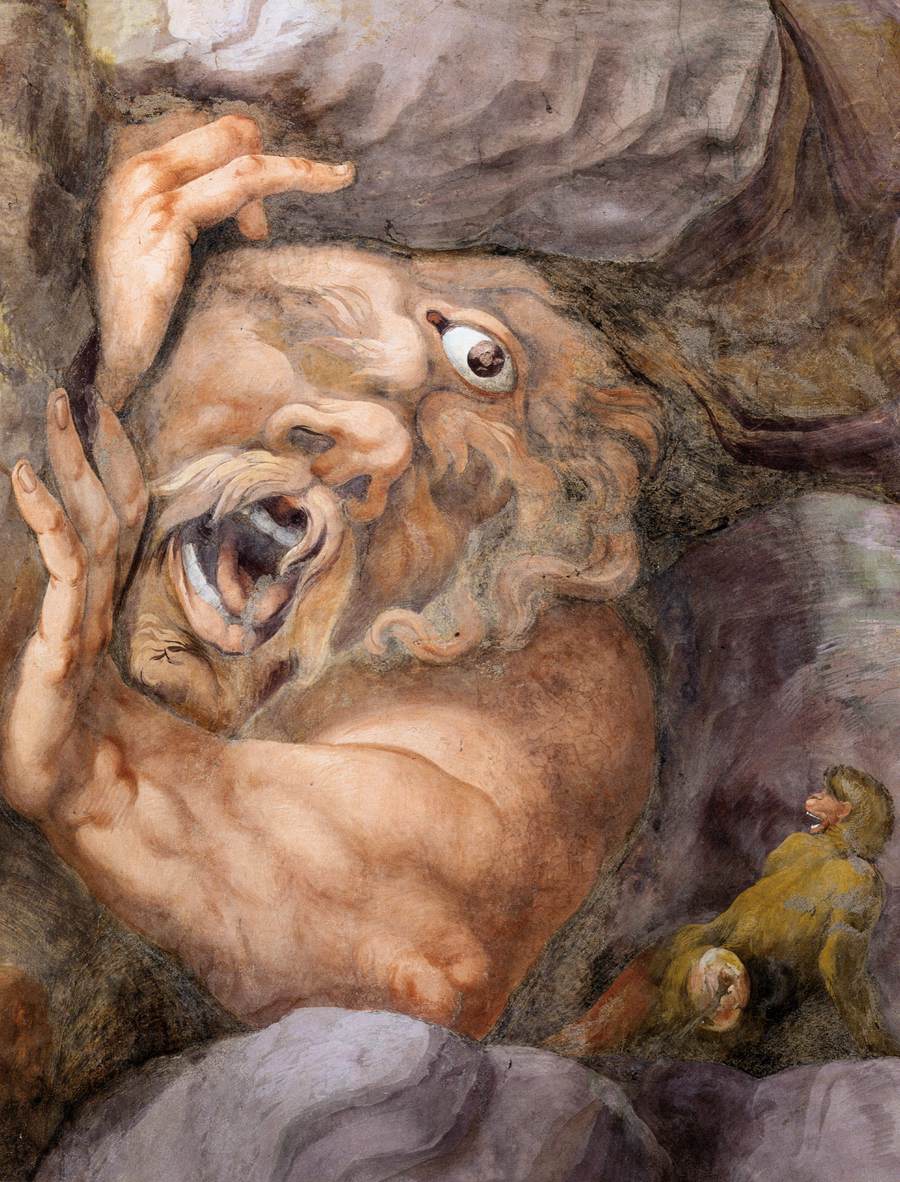
Spaesamento e meraviglia la Sala dei Giganti di Giulio Romano Mantova Arte.it
Italian artist and architect Giulio Romano, who had been a student of Raphael, designed the building. Today it is widely considered to be Romano's masterpiece. The palace was made to impress.

Details of the fresco by Giulio Romano (16th century) in the Camera dei Giganti (Chamber of the
Romano, Giulio Agent: Giulio Romano (Italian painter, ca. 1499-1546) View:. Fall of the Giants from Mount Olympus; Sala Dei Giganti; Palazzo Del Te Object Date: ca. 1530-1532 (creation) Location: Mantua, Italy - Palazzo del Te, (current location) Object Type: paintings; frescoes Technique: on walls Culture: Italian Style Period:.

View of the Sala dei Giganti (south and west walls) by GIULIO ROMANO
GIULIO ROMANO (b. ca. 1499, Roma, d. 1546, Mantova). Sala dei Giganti, Palazzo del Tè, Mantua: From the summit of Mount Olympus, the father of the gods hurls his thunderbolts at the earth, sweeping away the giants and the awkward pile of rocks intended to support their ascent into the heavens. The pantheon of pagan divinities that surround.
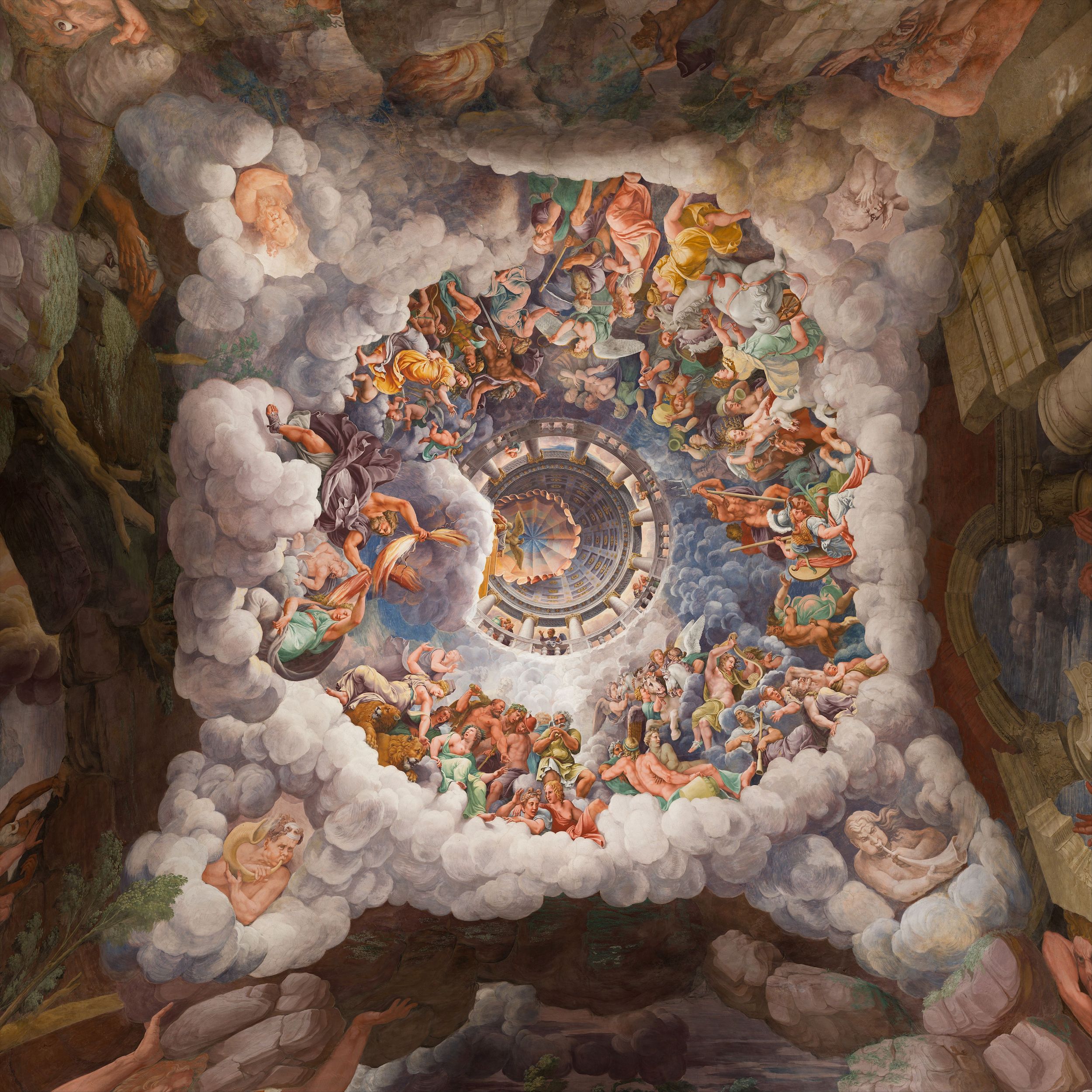
The Fall of the Gigants Giulio Romano 作品高清大图 麦田艺术
The Fall of the Giants is a fresco by the Italian Renaissance artist Giulio Romano. Born in Rome Giulio Romano was a pupil of Raphael. In the year 1522 he was courted by Federico II Gonzaga, the ruler of Mantua, who wanted him as his court artist as he was especially attracted by his skill as an architect.

Giulio Romano, Sala dei Giganti, 153235. Fresco on the north wall (detail). The room, finished
Original. Derogatory. Refined. Hyper-decorative. Courtly. Anti-classical. Classicizing. All of these words (and many more!) have been used to describe mannerist art, which begins in the 16th century. But what is it, and how could it possibly prompt so many contradictory descriptors?

Giulio Romano, sala dei Giganti, Palazzo Te, Mantova Brutta fine. The Bad end Giulio Romano
Giulio Pippi ( c. 1499 - 1 November 1546), known as Giulio Romano ( US: / ˌdʒuːljoʊ rəˈmɑːnoʊ / JOOL-yoh rə-MAH-noh, [1] Italian: [ˈdʒuːljo roˈmaːno]; French: Jules Romain ), [a] was an Italian painter and architect.
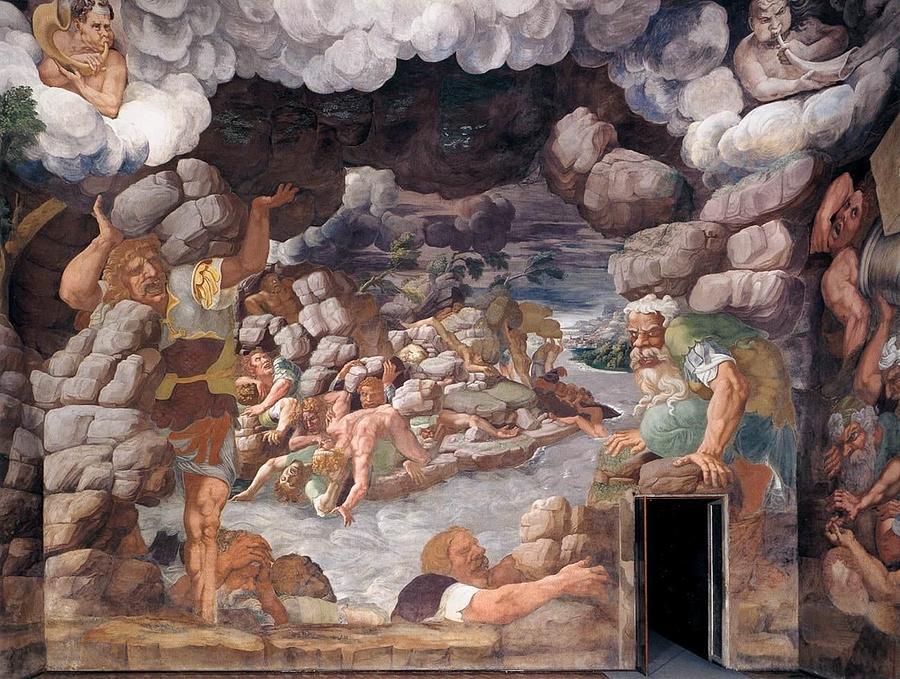
View of the Sala dei Giganti west wall Painting by Giulio Romano Fine Art America
The heavens are closed, in a manner that is characteristic of Giulio Romano 's art, that combines an invented reality with an artificial space. The twelve columns, almost hidden by a cloud, support the imaginary part of the cupola and trace another circle, a third one with respect to the one formed by the clouds and the one created by the canopy.
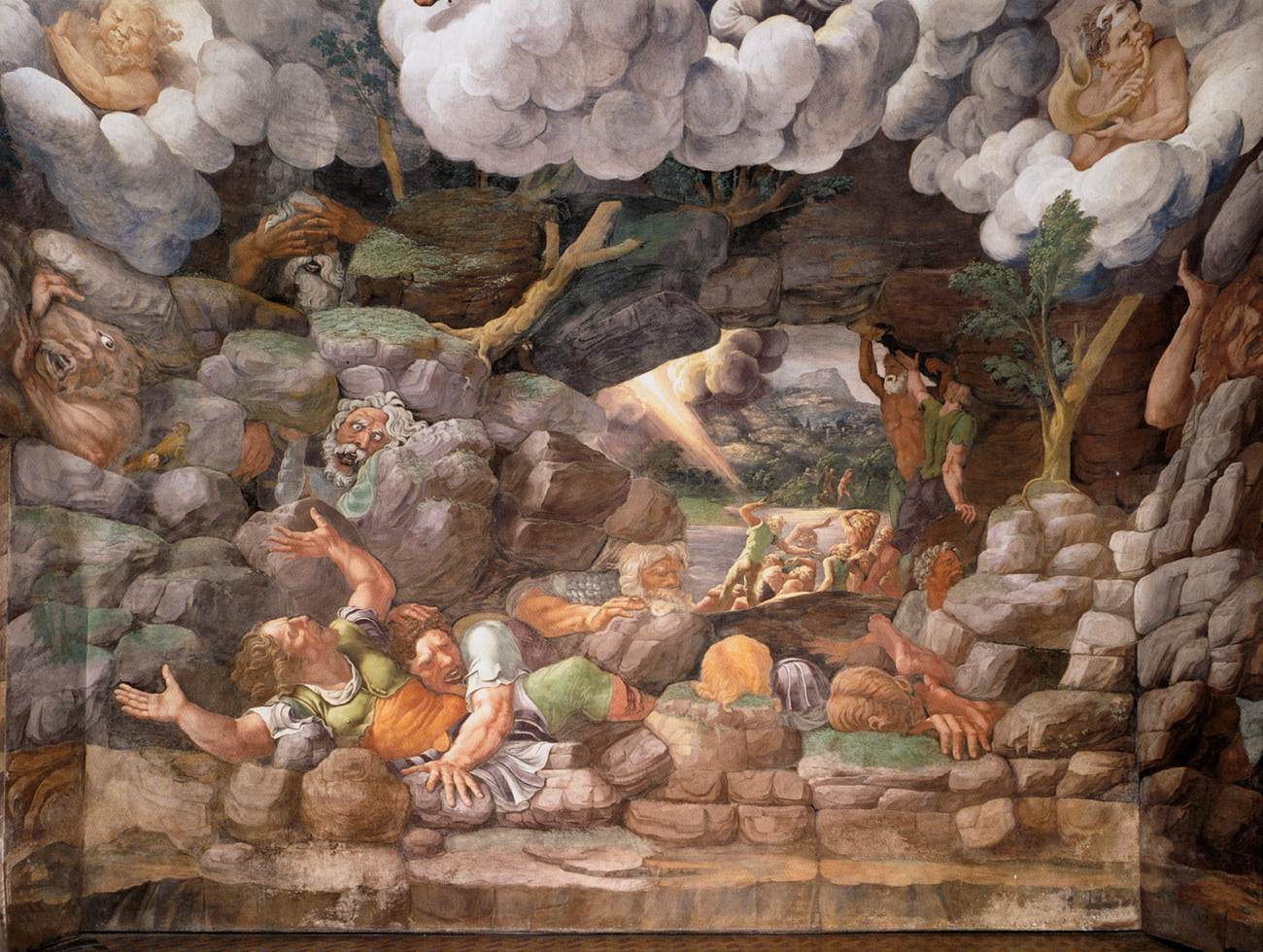
Fotoblog de mooiste fresco's in de Sala dei Giganti Italië Uitgelicht
's most famous fresco: Giulio Romano's illusionism invents a dome overhead and dissolves the room's architecture in the Fall of the Giants Like the Villa Farnesina in Rome, the suburban location allowed for a mixing of both palace and villa architecture.
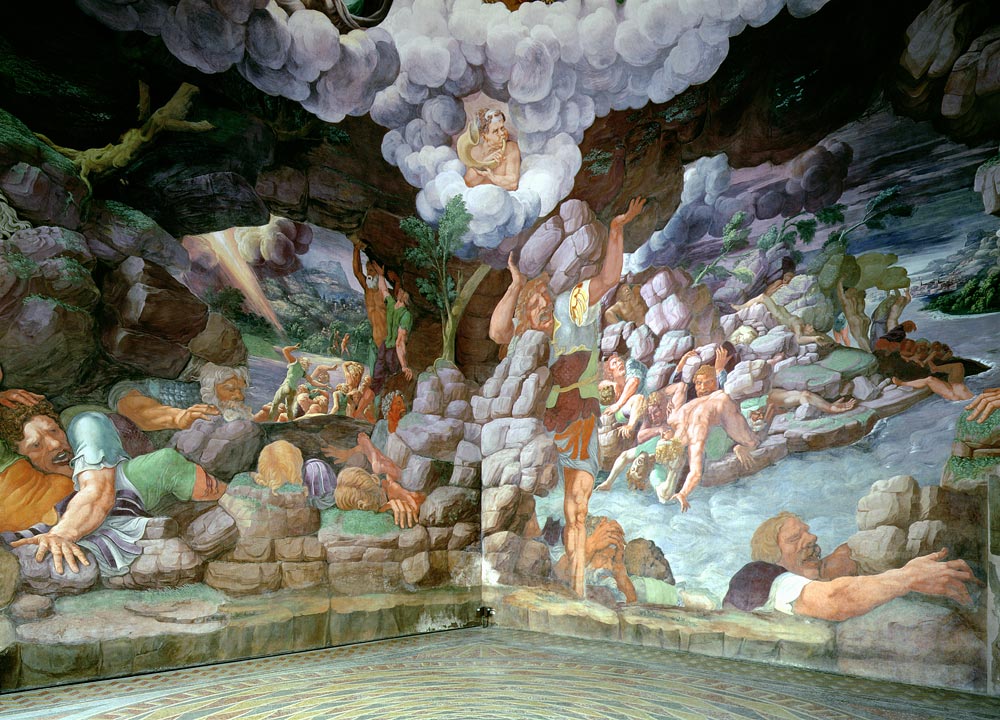
Sala dei Giganti, view of two walls show Giulio Romano Als reproductie kunstdruk of als
The Fall of the Giants is a fresco by the Italian Renaissance artist Giulio Romano. Born in Rome Giulio Romano was a pupil of Raphael. [1] In the year 1522 he was courted by Federico II Gonzaga, the ruler of Mantua, who wanted him as his court artist as he was especially attracted by his skill as an architect. [1]

De mooiste fresco's in de Sala dei Giganti Italië Uitgelicht
Giulio Romano (1499-1546): Biography of Mannerist Painter, Noted for Palazzo del Te Fresco Paintings, Villa Farnesina.. the fresco painting in the Sala dei Giganti (1532-4), in the south, is a seething mass of exaggerated forms which cover the entire room from floor to ceiling. The result was much admired by Vasari. Other rooms.